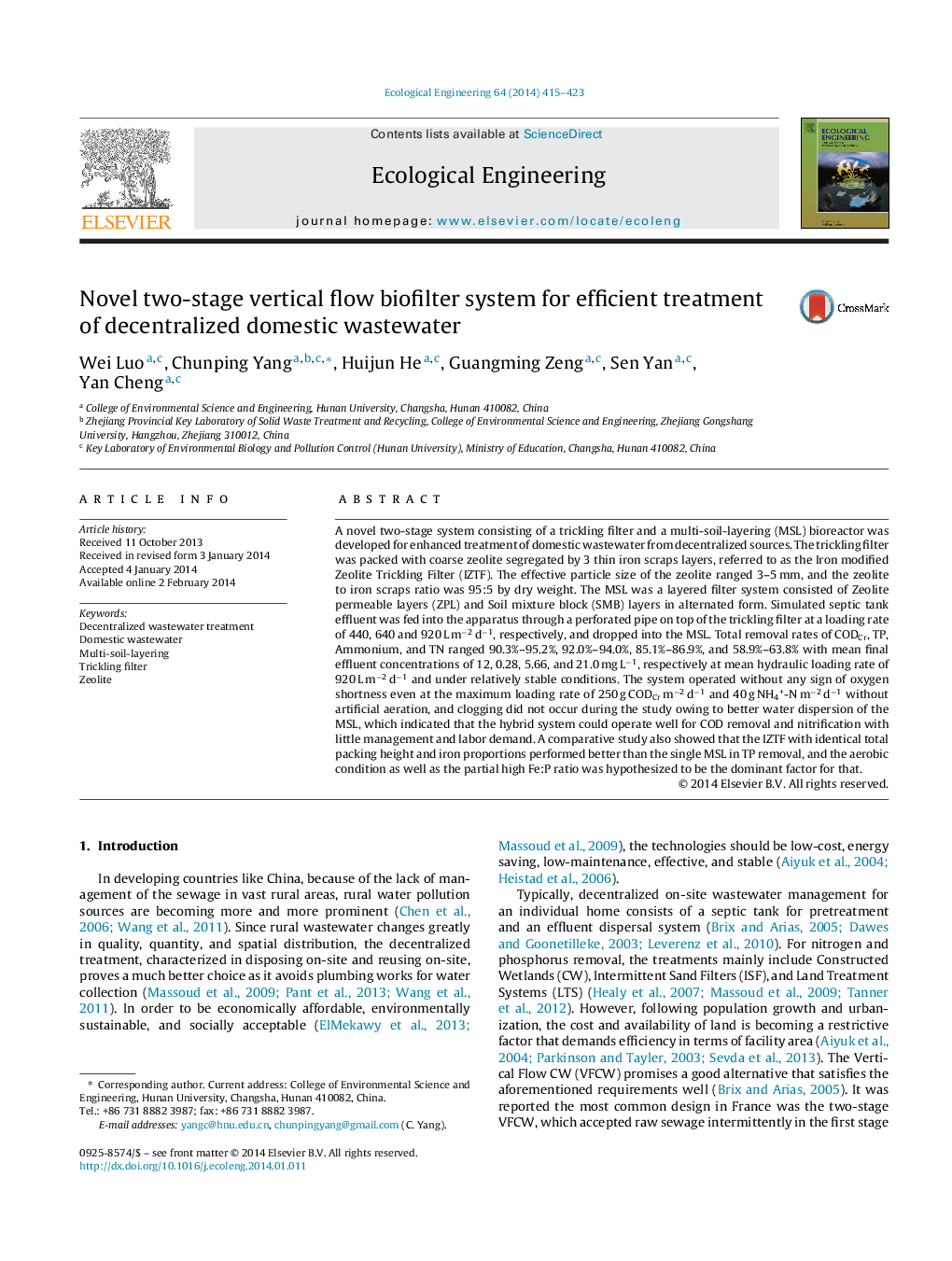| کد مقاله | کد نشریه | سال انتشار | مقاله انگلیسی | نسخه تمام متن |
|---|---|---|---|---|
| 4389605 | 1618035 | 2014 | 9 صفحه PDF | دانلود رایگان |
• Thin iron scraps layer paved in the trickling filter enhanced the TP removal.
• Zeolite trickling filter under intermittent water feeding benefits nitrification.
• Coarse media in the first stage inhibits clogging of the latter infiltration stage.
• Better influent dispersion for MSL was achieved owing to the two-stage design.
• Two-stage filter system appeals to decentralized treatment of sewage well.
A novel two-stage system consisting of a trickling filter and a multi-soil-layering (MSL) bioreactor was developed for enhanced treatment of domestic wastewater from decentralized sources. The trickling filter was packed with coarse zeolite segregated by 3 thin iron scraps layers, referred to as the Iron modified Zeolite Trickling Filter (IZTF). The effective particle size of the zeolite ranged 3–5 mm, and the zeolite to iron scraps ratio was 95:5 by dry weight. The MSL was a layered filter system consisted of Zeolite permeable layers (ZPL) and Soil mixture block (SMB) layers in alternated form. Simulated septic tank effluent was fed into the apparatus through a perforated pipe on top of the trickling filter at a loading rate of 440, 640 and 920 L m−2 d−1, respectively, and dropped into the MSL. Total removal rates of CODCr, TP, Ammonium, and TN ranged 90.3%–95.2%, 92.0%–94.0%, 85.1%–86.9%, and 58.9%–63.8% with mean final effluent concentrations of 12, 0.28, 5.66, and 21.0 mg L−1, respectively at mean hydraulic loading rate of 920 L m−2 d−1 and under relatively stable conditions. The system operated without any sign of oxygen shortness even at the maximum loading rate of 250 g CODCr m−2 d−1 and 40 g NH4+-N m−2 d−1 without artificial aeration, and clogging did not occur during the study owing to better water dispersion of the MSL, which indicated that the hybrid system could operate well for COD removal and nitrification with little management and labor demand. A comparative study also showed that the IZTF with identical total packing height and iron proportions performed better than the single MSL in TP removal, and the aerobic condition as well as the partial high Fe:P ratio was hypothesized to be the dominant factor for that.
Journal: Ecological Engineering - Volume 64, March 2014, Pages 415–423
